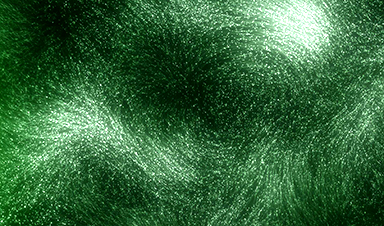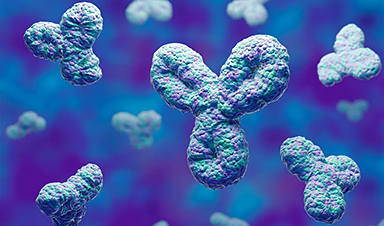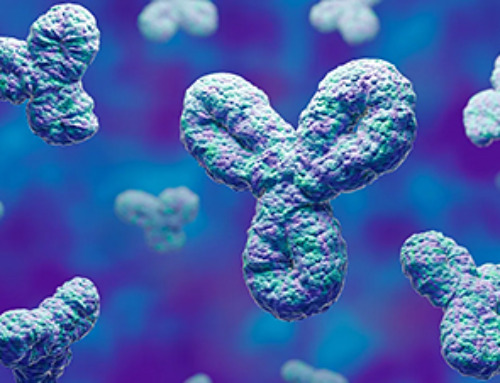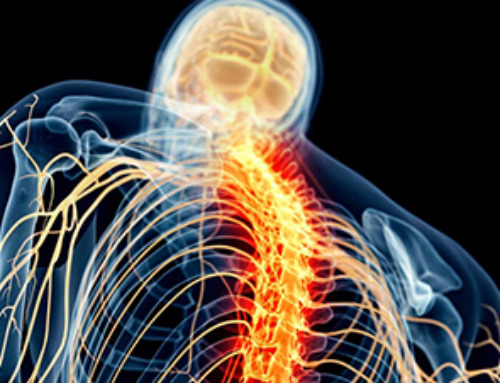What makes boron-doped nanodiamonds so special? Boron-doped nanodiamonds for photocatalyis (BNDs) are a special type of diamond that has been modified with borons. They have been shown to enhance photocatalytic activation and thus increase their potential use in various fields.
Nanodiamonds as Photocatalysts
Diamond nanomaterials are promising candidates for inexpensive photocatalysts. They can be activated by light and then produce carbon-neutral “solar fuels” by speeding up certain interactions between water and CO2. This means that the particles must be exposed to direct sunlight.
The EU project DIACAT is now doping diamond materials with boron and demonstrates how this could enhance photocatalytic characteristics significantly at BESSY II.
Climate change is happening, and it will continue to occur as long as we do not achieve sufficient CO2 emission reductions. One way that we can do this is by returning greenhouse gas CO2 back into an energy cycle, namely through methanol production. However, the process requires energy and catalysts.
If we can harness the energy from sunlight and build light-active photocatalysts made of affordable and commonly available materials rather than rare metals like platinum, there is a chance that “green” solar fuels could be created in a climate-neutral manner.
Can Boron Doping help?
Diamond nanomaterials are not precious crystalline diamonds but tiny nanocrystals of a few thousand carbon atoms that are soluble in water and resemble black slurry or nanostructured carbon foams with large surface areas. They are a great potential as photocatalysts but need UV light for activation. However, this component of the solar spectrum is not very strong.
HZB-scientist Tristan Petit and his cooperation partners in DIACAT have now been working on the modeling of energy levels within such materials, which shows that intermediate stages can be built into a photovoltaic material by doping with foreign atoms.
For example, boron-doped nanodiamonds seem to play an integral role to enhance photocatalytic activation which is mostly attributable to its increased visible light absorption efficiency. Borons addition also creates semiconducting properties, which will soon open up a new class of nanodiamond electronics applications.
Properties of Nanodiamonds
Nanodiamonds are interesting carbon nanoparticles because of their unique physical and chemical properties. Their hardness is higher than other materials. Their chemical stability is better than other materials. And their thermal conductivity is extremely high. So NDs are used in lots of fields, including medicine, electronics, optics, and catalysis. They can also transport small molecules, proteins, and nucleic acids among many other treatments.
![]()
Optical Properties Of Nanodiamonds
Figure 1 shows the optical properties of the NDs.
(A) The absorption spectrum of Cu2O, NDS, NDs – Cu2O, and physical mixtures of NDs and Cu2O
(B) Scattering effect of the NDs in water
(C) Fluorescence spectra in water
(D) Excitation monitored at 450 nm emission (1) Emission at 410 nm excitation (2) Spectra of ND-ODA dispersion in dichloromethane: images of ND and ND-ODA dispersions in dichloromethane with UV (365 nm) excitation.
Application of Nanodiamonds
In the field of photocatalysis, NDs are a newly preferred catalyst compared to TiO2, g-C3N4, or others. NDs were reviewed by focusing on different applications: hydrogen production, air pollution degradation, carbon dioxide reduction, nitrogen reduction, and graphene oxide removal.
These tiny nanoparticles can also be used as antimicrobial agents for their features such as size, shape, and biocompatibility. This makes them ideal for the development of efficient and personalised nanotherapies, such as vaccinations or drug delivery systems.
Nanodiamonds in Bioimaging:
Bioimaging is an exciting area that allows noninvasive insight into the tissues and cells of living organisms to monitor metabolic processes and disease-related alterations. NDs have lately emerged as a good candidate for contrast agents when compared to other nanomaterials. NDs are ideal for bioimaging because of their tiny size, sustained fluorescence, and great biocompatibility.
The NV-center of fluorescent NDs, in particular, is an atom-like light-emitting source, and its electron spins may be detected and manipulated optically even at room temperature. Furthermore, the majority of its emission occurs in the near-infrared range, which is advantageous for biomedical imaging and diagnostics.
Nanodiamonds in Drug Delivery
The biocompatibility, water dispersibility, drug-carrying ability, and targeted therapeutic potential of a nanomaterial determine whether it is appropriate for drug delivery. NDs are modified with specific functional groups so that drugs can physically or chemically be connected to NDs for delivery.
Zhang et al. described a multicomponent NDs-based drug delivery system with simultaneous targeting, imaging, and increased therapeutic capabilities. Anti-HIV medicines based on NDs were delivered to the brain by Roy et al.
Nanodiamonds in Biosensing
A biosensor is a device that analyses biological reactions and converts them into electrical signals. A biosensor is a cutting-edge technology developed by biologists, chemists, physicists, physicians, and electronic engineers. Many advancements have been made in numerous fields since the discovery of NDs. NDs have also achieved some progress in the field of biosensors.
Nanodiamonds in Heat Therapy
Heat therapy is a way of eliminating tumour cells by heating the lesion site to different degrees depending on how sensitive tumour cells and normal cells are to heat. Heat therapy is divided into two categories.
Thermoablation with a treatment temperature control over 47 °C can cause rapid necrosis of tumour tissue under high temperatures, but it also causes harm to normal tissue and requires a complicated clinical trial; hence it is rarely used. The other is hyperthermia when the treatment temperature is kept between 42 and 46 degrees Celsius.
Numerous studies proved that nanomaterials (such as ferromagnetic nanoparticles, metallic nanoparticles, and carbon nanotubes) are capable of hyperthermia therapy for tumour treatment. However, the toxicity of each of these materials varies.
Because of their biocompatibility, NDs have been used in hyperthermia for tumour treatment. Vervald et al. investigated boron-doped NDs for hyperthermic applications in a series of research. In 2016, Vervald et al. explored the influence of boron-doped NDs on hydrogen bonding in plasmonic liquids.
They used a visible wavelength laser to irradiate the boron-doped NDs water dispersion in 2017 and discovered that the boron-doped NDs efficiently heated the surrounding water under laser irradiation.
The ability of boron-doped NDs to heat liquids under the influence of laser radiation opens up exciting possibilities for nano-reagent manufacturing in medical cancer and local thermal therapy.
Potential implications with Nanodiamonds
NDs are environmentally friendly and non-toxic materials that can be used in the design of new biomedical devices. They have remarkable mechanical, optical and fluorescent properties, which makes them highly useful when working with drug delivery or diagnosis approaches.
According to preliminary studies, NDs have the ability to modulate the immune response, which is an important feature to combat viruses. Furthermore, the diverse abilities of NDs make them an excellent candidate for improving medication administration, which, when combined with their fluorescence ability, enables drug monitoring.
Nanodiamonds provide a novel strategy for reducing the high levels of co-morbidity and mortality associated with antibiotic resistance, as well as reducing treatment costs, resulting in reduced antimicrobial resistance.
Some traits that NDs will need in future be robustness against thermochemical changes in their surroundings and permanence in the host’s “hostile environment”.
News
Specially engineered antibody delivers RNA therapy to treatment-resistant tumors
Elias Quijano, PhD; Diana Martinez-Saucedo, PhD; Zaira Ianniello, PhD; and Natasha Pinto-Medici, PhD, there are 25 other contributors, most from Yale's Department of Therapeutic Radiology and from the departments of genetics, molecular biophysics and [...]
Vaccinated women face fewer cervical cancer risks
New data from Denmark shows the HPV vaccine’s powerful long-term impact, while also revealing why cervical cancer screening is still essential. A Danish study published in the journal Eurosurveillance reports that women who received the human [...]
3D-printed implant offers a potential new route to repair spinal cord injuries
A research team at RCSI University of Medicine and Health Sciences has developed a 3-D printed implant to deliver electrical stimulation to injured areas of the spinal cord, offering a potential new route to [...]
Nanocrystals Carrying Radioisotopes Offer New Hope for Cancer Treatment
The Science Scientists have developed tiny nanocrystal particles made up of isotopes of the elements lanthanum, vanadium, and oxygen for use in treating cancer. These crystals are smaller than many microbes and can carry isotopes of [...]
New Once-a-Week Shot Promises Life-Changing Relief for Parkinson’s Patients
A once-a-week shot from Australian scientists could spare people with Parkinson’s the grind of taking pills several times a day. The tiny, biodegradable gel sits under the skin and releases steady doses of two [...]
Weekly injectable drug offers hope for Parkinson’s patients
A new weekly injectable drug could transform the lives of more than eight million people living with Parkinson's disease, potentially replacing the need for multiple daily tablets. Scientists from the University of South Australia [...]
Most Plastic in the Ocean Is Invisible—And Deadly
Nanoplastics—particles smaller than a human hair—can pass through cell walls and enter the food web. New research suggest 27 million metric tons of nanoplastics are spread across just the top layer of the North [...]
Repurposed drugs could calm the immune system’s response to nanomedicine
An international study led by researchers at the University of Colorado Anschutz Medical Campus has identified a promising strategy to enhance the safety of nanomedicines, advanced therapies often used in cancer and vaccine treatments, [...]
Nano-Enhanced Hydrogel Strategies for Cartilage Repair
A recent article in Engineering describes the development of a protein-based nanocomposite hydrogel designed to deliver two therapeutic agents—dexamethasone (Dex) and kartogenin (KGN)—to support cartilage repair. The hydrogel is engineered to modulate immune responses and promote [...]
New Cancer Drug Blocks Tumors Without Debilitating Side Effects
A new drug targets RAS-PI3Kα pathways without harmful side effects. It was developed using high-performance computing and AI. A new cancer drug candidate, developed through a collaboration between Lawrence Livermore National Laboratory (LLNL), BridgeBio Oncology [...]
Scientists Are Pretty Close to Replicating the First Thing That Ever Lived
For 400 million years, a leading hypothesis claims, Earth was an “RNA World,” meaning that life must’ve first replicated from RNA before the arrival of proteins and DNA. Unfortunately, scientists have failed to find [...]
Why ‘Peniaphobia’ Is Exploding Among Young People (And Why We Should Be Concerned)
An insidious illness is taking hold among a growing proportion of young people. Little known to the general public, peniaphobia—the fear of becoming poor—is gaining ground among teens and young adults. Discover the causes [...]
Team finds flawed data in recent study relevant to coronavirus antiviral development
The COVID pandemic illustrated how urgently we need antiviral medications capable of treating coronavirus infections. To aid this effort, researchers quickly homed in on part of SARS-CoV-2's molecular structure known as the NiRAN domain—an [...]
Drug-Coated Neural Implants Reduce Immune Rejection
Summary: A new study shows that coating neural prosthetic implants with the anti-inflammatory drug dexamethasone helps reduce the body’s immune response and scar tissue formation. This strategy enhances the long-term performance and stability of electrodes [...]
Scientists discover cancer-fighting bacteria that ‘soak up’ forever chemicals in the body
A family of healthy bacteria may help 'soak up' toxic forever chemicals in the body, warding off their cancerous effects. Forever chemicals, also known as PFAS (per- and polyfluoroalkyl substances), are toxic chemicals that [...]
Johns Hopkins Researchers Uncover a New Way To Kill Cancer Cells
A new study reveals that blocking ribosomal RNA production rewires cancer cell behavior and could help treat genetically unstable tumors. Researchers at the Johns Hopkins Kimmel Cancer Center and the Department of Radiation Oncology and Molecular [...]





















